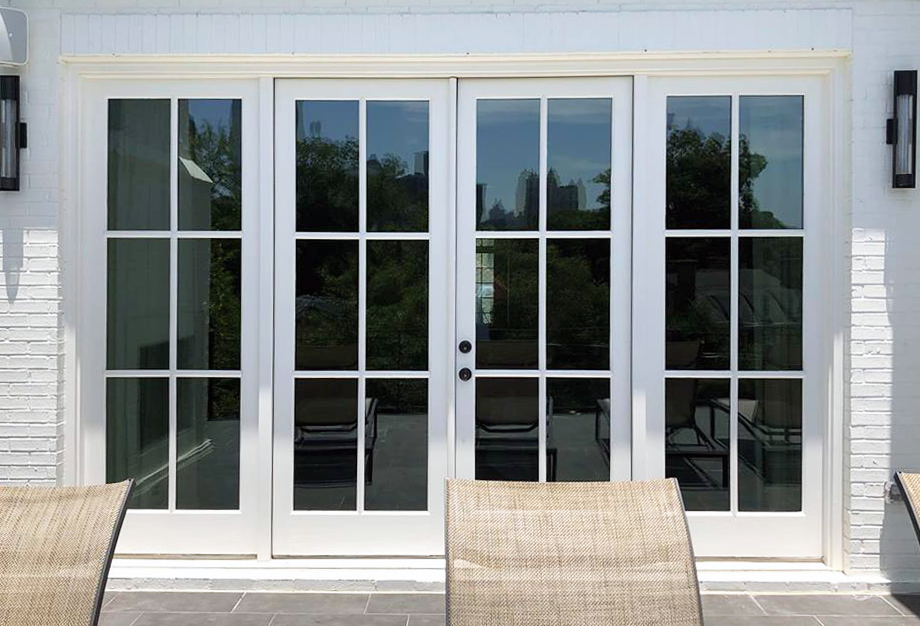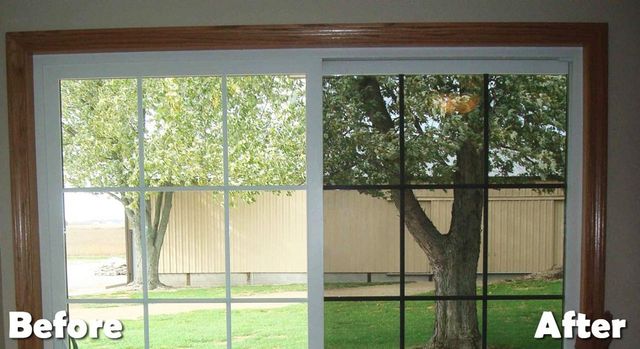Residential Window Tint: Increase Safety and Include a Layer of Security
Residential Window Tint: Increase Safety and Include a Layer of Security
Blog Article
Exactly How Residential Home Window Tinting Improves Your Home's Power Performance
Residential home window tinting offers an engaging option for property owners looking for to enhance energy efficiency within their home. By applying specialized movies to windows, it effectively minimizes warmth transfer, thus supporting indoor temperatures and minimizing the requirement for extreme home heating or air conditioning. This not just reduces power consumption yet likewise provides a more comfortable atmosphere by alleviating glow. Understanding the nuances of exactly how tinting works and choosing the ideal type for your home can be pivotal. Strangely enough, what aspects should one take into consideration prior to making this investment?
Understanding Home Window Tinting
Recognizing window tinting is necessary for homeowners looking for to boost both comfort and energy effectiveness in their living rooms. Residential Window Tint. Window tinting includes the application of a slim film to the inside or exterior surface of glass home windows. This movie can significantly modulate the amount of sunlight and heat that enters a home, thus affecting indoor environment conditions
There are numerous sorts of window tinting films readily available, each with distinctive buildings. Dyed movies soak up solar energy, while reflective films disperse it away from the glass surface area. Ceramic movies use a balance of visibility and warmth denial, making them a popular selection among home owners. The effectiveness of home window tinting is often measured by its Visible Light Transmission (VLT) portion, which suggests just how much light can go through the film.
Benefits of Power Performance
Home window tinting not just boosts visual appeals yet likewise plays a considerable function in enhancing power performance within household spaces. By lowering warmth transfer through windows, tinted movies produce a much more steady indoor environment, which can cause considerable decreases in power consumption for heating and air conditioning. This energy performance translates into reduced energy costs, offering home owners with considerable long-lasting cost savings.

Additionally, window tinting enhances the comfort of living rooms. By reducing glow and blocking hazardous UV rays, colored windows develop a more enjoyable environment, which can lead to improved health for occupants. The defense versus UV rays likewise assists maintain furnishings and flooring from fading, adding to the longevity of household things.
Just How Tinting Works
Tinting movies operate via a mix of innovative materials and technologies designed to control the amount of solar power going into a home. Primarily made up of polyester, these movies usually incorporate ceramic or metal bits that reflect and take in warmth. This double ability permits them to considerably lower the penetration of ultraviolet (UV) rays and infrared radiation while allowing visible light to travel through.
The effectiveness of home window tinting is determined by its solar warm gain coefficient (SHGC), which shows just how much solar power is transmitted through the home window. Reduced SHGC values are more suitable as they represent greater warm rejection. Additionally, window colors can feature a variety of tones, permitting property owners to personalize their aesthetic choices while enhancing energy efficiency.
Moreover, these movies function as a barrier, stopping warm loss during colder months by reflecting indoor warmth back right into the home. This thermal insulation effect enhances the air conditioning advantages gained throughout warmer months, adding to a well balanced indoor climate year-round. By taking care of solar energy effectively, property home window tinting not only boosts convenience but likewise plays an essential duty in reducing energy consumption and lowering utility bills.
Choosing the Right Tint

There are various types of home window films available, consisting of colored, metalized, and ceramic. Colored movies are cost-efficient yet might have limited resilience. Metalized movies provide far better warmth denial yet can conflict with electronic signals. Ceramic films give exceptional warm control without endangering presence and are extremely durable, making them a prominent choice.
Noticeable light transmission (VLT) is an additional crucial element, as it indicates the amount of all-natural light that can go through the colored glass. Home owners should select a tint with a VLT that matches their illumination preferences while still supplying sufficient glare reduction.
Additionally, assessing the solar warmth gain coefficient (SHGC) can help figure out how see this here well a color can obstruct warm from sunlight. A reduced SHGC shows far better warmth control, ultimately enhancing energy performance.
Installment and Maintenance Tips
Proper setup and upkeep are important components in maximizing the benefits of residential home window tinting. To achieve optimum results, it is a good idea to hire a qualified professional for setup. This ensures that the tint is used properly, avoiding air bubbles, wrinkles, or imbalance that can endanger efficiency. Experts additionally use specialized tools and techniques, which can boost the sturdiness and efficiency of the color.
Adhering to installation, upkeep is important to lengthen the life of the home window movie. It is recommended to wait a minimum of 30 days prior to cleaning up the colored home windows to enable the adhesive to heal completely. When cleansing, use a soft fabric and a mild, ammonia-free cleaner to avoid damaging the film. Avoid rough materials that can scratch the surface.
Attending to these problems promptly my link can protect against further damage and preserve energy performance. By sticking to these installation and maintenance suggestions, house owners can ensure their home window tinting continues to supply considerable energy cost savings and convenience for years to come.
Verdict
To conclude, property home window tinting functions as an efficient remedy for improving power effectiveness within homes. By reducing warm transfer and obstructing damaging UV rays, window movies add to reduce energy usage and enhanced indoor comfort. The choice of proper tinting materials, together with appropriate setup and upkeep, additionally takes full advantage of these advantages. Ultimately, window tinting represents a lasting investment that not just decreases energy costs but also promotes a comfy living setting throughout the year.
Window tinting involves the application of a slim movie to the interior or exterior surface area of glass home windows. By minimizing heat transfer via windows, tinted films develop a much more stable interior environment, which can lead to significant decreases in energy intake for home heating and cooling.The effectiveness of home window tinting is measured by its solar warm gain coefficient (SHGC), which shows just how much solar power is sent through the anchor home window. By handling solar power efficiently, domestic window tinting not only improves comfort yet likewise plays a crucial role in minimizing power usage and reducing utility bills.
By minimizing heat transfer and obstructing hazardous UV rays, window films add to decrease power usage and boosted indoor convenience.
Report this page